Strict Liability
Office Hours
This Friday, office hours will be at 1pm.
Midterm
My unhelpful rubric
5 and under ->
6 ->
7 ->
8 ->
9 ->
10 ->
My unhelpful rubric
5 and under -> Did not competently answer the question
6 ->
7 ->
8 ->
9 ->
10 ->
My unhelpful rubric
5 and under -> Did not competently answer the question
6 -> Showed competency but made errors
7 ->
8 ->
9 ->
10 ->
My unhelpful rubric
5 and under -> Did not competently answer the question
6 -> Showed competency but made errors
7 -> Competent answer, checked all the boxes
8 ->
9 ->
10 ->
My unhelpful rubric
5 and under -> Did not competently answer the question
6 -> Showed competency but made errors
7 -> Competent answer, checked all the boxes
8 -> Persuasive answer
9 ->
10 ->
My unhelpful rubric
5 and under -> Did not competently answer the question
6 -> Showed competency but made errors
7 -> Competent answer, checked all the boxes
8 -> Persuasive answer
9 -> Opposing counsel would be scared of you
10 ->
My unhelpful rubric
5 and under -> Did not competently answer the question
6 -> Showed competency but made errors
7 -> Competent answer, checked all the boxes
8 -> Persuasive answer
9 -> Opposing counsel would be scared of you
10 -> Why are you better than me at torts?
My unhelpful rubric
5 and under -> Did not competently answer the question
6 -> Showed competency but made errors
7 -> Competent answer, checked all the boxes
8 -> Persuasive answer
9 -> Opposing counsel would be scared of you
10 -> Why are you better than me at torts?
Exercise: Causation & Vicarious Liability (pg. 99)
Cooper (defendant who put out trashcan) seeks to dismiss the case against her for two independent reasons:
- Cooper did not breach a duty of care to Boyd.
- Cooper did not proximately cause Boyd’s injuries.
Greene (driver) seeks to dismiss the case against her for two independent reasons:
- Cooper putting out the trashcans was an intervening cause of Boyd’s injuries.
- Even if Cooper’s actions were not an intervening cause, Greene still did not proximately cause Boyd’s injuries.
ACME seeks to dismiss the case against it for two reasons:
- ACME is not liable for Greene’s tortious acts because she was acting outside the scope of her employment.
- ACME is not liable because asking Greene to pick up a birthday cake was not a factual cause of Boyd’s injuries.
Two parts to causation
- Factual cause
- Proximate cause
Two different tests for factual causation
- “But for”
- Substantial factor
Factual Cause
Stubbs v. City of Rochester: “Sewage in the Drinking Water” Zuchowicz v. United States: “Prescribed Drug Overdose” Anderson v. Minneapolis, St. Paul & Sault Ste. Marie Railway Co.: “Multiple Fires Whodunnit” Summers v. Tice: “Hunting Party Whodunnit” Garcia v. Joseph Vince Co.: “Fencing Sabre Whodunnit” Sindell v. Abbott Laboratories: “Toxic Harms”
Proximate Cause
About scope of liability. Is the harm too attenuated? Policy question based on a rough sense of justice.
Rule-like carveouts:
- Danger invites rescue
- Eggshell plaintiff
- Intervening / Superseding Cause
In re Polemis: “The Plank that Made a Ship Explode” Wagner v. International Railway Co.: “The Injured Rescuer” Benn v. Thomas: “The Time-Delayed Heart Attack” Steinhauser v. Hertz Corp.: “Sudden Schizophrenia” Gibson v. Garcia: “The Rotten Telephone Pole that Fell on the Car” Berry v. Borough of Sugar Notch: “The Rotten Tree that Fell on the Speeding Car” Palsgraf v. Long Island Railway Co.: “Fireworks on the Train Platform”
Vicarious Liability
Three criteria for scope of employment
- Employee’s conduct must be of the general kind the employee is hired to perform.
- Employee’s conduct must occur substantially within the hours and ordinary spatial boundaries of the employment.
- Employee’s conduct must be motivated, at least in part, by the purpose of serving the employer’s interest.
Vicarious Liability
Miller v. Reiman-Wuerth Co.: “The Bank Errand” Christensen v. Swenson: “The Lunch Break” Kuehn v. Inter-city Freight: “Road Rage” Sage Club v. Hunt: “The Violent Bartender”
Contributory / Comparative Negligence and Assumption of Risk
Contributory Negligence in General:
The defendant is not liable
If the plaintiff was also negligent
— Duty,
— Breach,
— Causation, and
— Harm
Unless an exception applies:
— Last clear chance,
— Recklessness or willfulness of defendant, or
— Statute
Can the negligent plaintiff recover damages?

Doctrine of Contribution
Traditional Common Law Approach
Two versions:
- Joint and several liability
- Several liability
Order of operations with multiple injuries and multiple liable defendants
First step:
Separate injuries based on factual cause.
Second step:
For injuries that multiple defendants caused, sort out liability based on the contribution rule in the jurisdiction.
Explicit assumption of risk
Implicit assumption of risk
Tunkl Factors
- Business of a type generally thought suitable for public regulation.
- Defendant performs a service of great importance to the public (often a matter of practical necessity for some members of the public)
- Defendant willing to perform this service for any member of the public
- Defendant has bargaining advantage
- Standardized adhesion contract of exculpation
- Plaintiff placed under the control of the defendant, subject to the risk of carelessness by the seller or his agents.
Exercise: Defenses to Negligence
Version #1: contributory negligence, assumption of risk, Tunkl factors
Plaintiffs:
- Emily (baby)
- Lynn (sister)
- Tito (father)
- Tatiana (mother)
Exercise: Defenses to Negligence
Version #2: “not as great as” comparative negligence, assumption of risk
Plaintiffs:
- Emily (baby)
- Lynn (sister)
- Tito (father)
- Tatiana (mother)
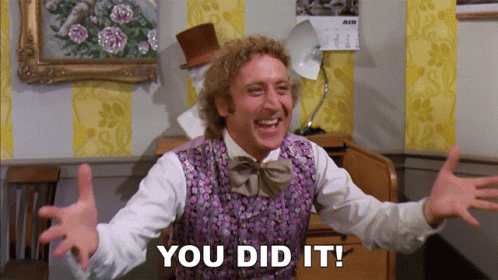
Negligence is finished!
What’s next?
- Strict liability & products liability
- Intentional torts
- Alternatives to tort (insurance, workers comp, compensation funds)
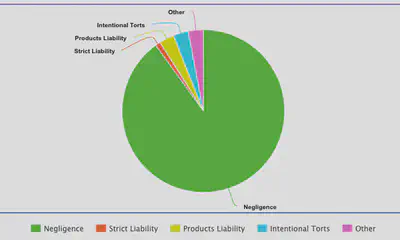
Fletcher v. Rylands
Rylands v. Fletcher
Liability applies for:
[fit] PWFOPBOHL&C&KTALDMIIE
Liability applies for:
[fit] PWFOPBOHL&C&KTALDMIIE
A person who for his own purpose brings onto his land and collects and keeps there anything likely to do mischief if it escapes
Limits on Strict Liability
Fletcher v. Rylands
— PWFOPBOHL&C&KTALDMIIE
Rylands v. Fletcher
— PWFOPBOHL&C&KTA “non-natural” and LDMIIE
First Restatement
— “ultrahazardous activity”
Second Restatement
— “abnormally dangerous activity”
[fit] Indiana Harbor Belt v. American Cyanamid
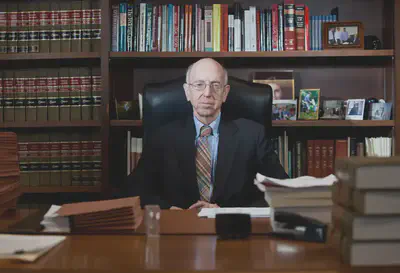
[fit] Indiana Harbor Belt v. American Cyanamid
Strict liability applies for behavior that is:
- Very risky and that risk cannot be eliminated at reasonable cost
AND
- Not susceptible to due care analysis
Restatement Definitions
“In determining whether an activity is abnormally dangerous, the following factors are to be considered: (a) existence of a high degree of risk of some harm to the person, land or chattels of others; (b) likelihood that the harm that results from it will be great; (c) inability to eliminate the risk by the exercise of reasonable care; (d) extent to which the activity is not a matter of common usage; (e) inappropriateness of the activity to the place where it is carried on; and (f) extent to which its value to the community is outweighed by its dangerous attributes.” Restatement (Second) of Torts § 520 (1977).
“An activity is abnormally dangerous if: (1) the activity creates a foreseeable and highly significant risk of physical harm even when reasonable care is exercised by all actors; and (2) the activity is not one of common usage.” Restatement (Third) Torts: Liability for Physical and Emotional Harm § 20 (2010).
[fit] Tort law is the law of
[fit] negligence.
[fit] Strict liability is the law of tort law when negligence fails.
MacPherson v. Buick Motor Co.
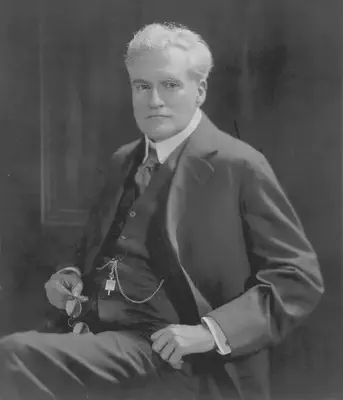
MacPherson v. Buick Motor Co.
Escola v. Coca Cola
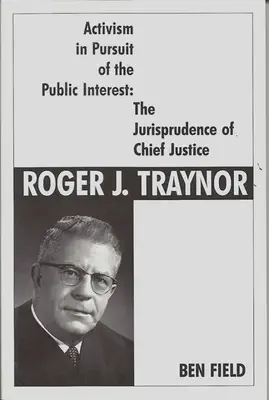
Rationale
Power dynamics
Cost spreading / insurance
Deterrence
Extensions of Liability
Plaintiffs: Not just consumers but bystanders.
Defendants: Not just manufacturers but retailers.
Defect Requirement
Barker v. Lull Engineering
Two tests:
- Consumer expectations
- Excessive preventable danger
—
Soule v. General Motors
—
When does the consumer expectations test apply?
[fit] Not at
[fit] all clear!
It depends upon the “everyday experience of the product’s users”